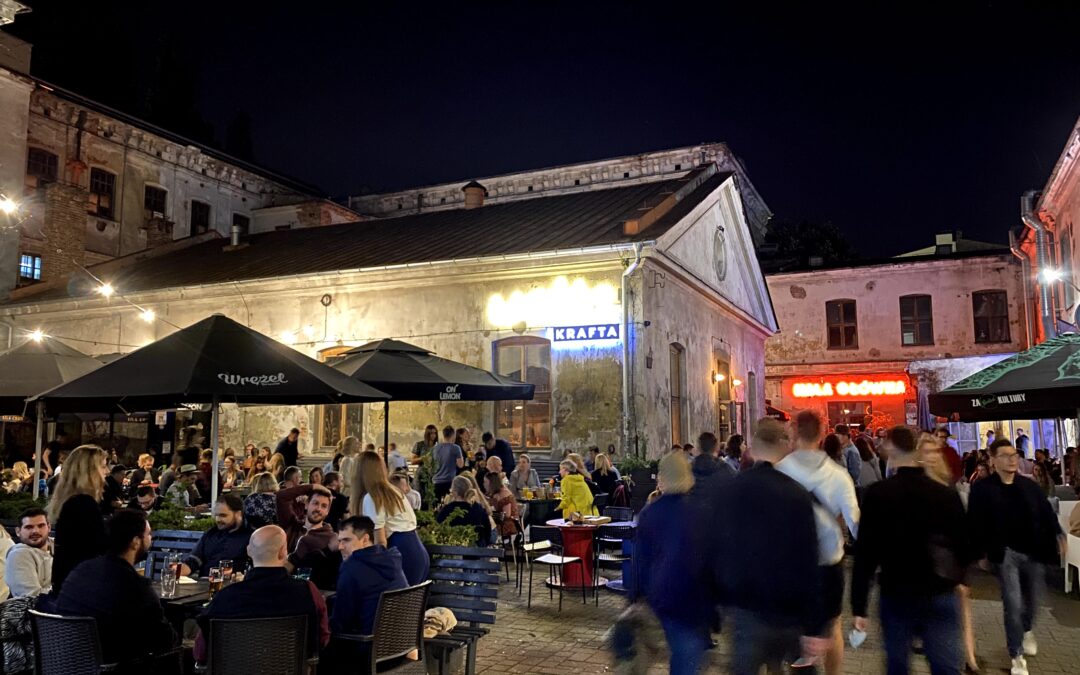By Marcin Makowski (tekst dostępny również w języku polskim)
There has never been a place on Kraków’s cultural and nightlife map to rival it. Since opening just four years ago, the post-industrial space known as Dolne Młyny – housed on the site of a former tobacco factory – has become wildly popular with locals and tourists. Operating almost as an autonomous city in a city, it is chock-full of pubs, bars, and concert and exhibition spaces.
But by the end of this month the foundation that has administered the area in this time must hand it over to the owner of the site, a Spanish developer. What comes next is not yet clear. There is a vague promise of a hotel complex, preserving at least part of its current character. There are also hopes that Dolne Młyny could be reborn elsewhere in the city.
“Urban ecosystem of visions”
For many years, this part of Kraków’s city centre – enclosed by Czarnowiejska, Czysta and Dolnych Mlynów streets – was a blank spot on the map. Peer through the fence and you could make out a desolate complex of pre-war brick buildings, slowly falling into ruin.
Yet in the turbulent period of inter-war Poland, this had been a vibrant district occupied by the State Cigar and Tobacco Products Factory, one of the mainstays of the resurgent Polish economy.
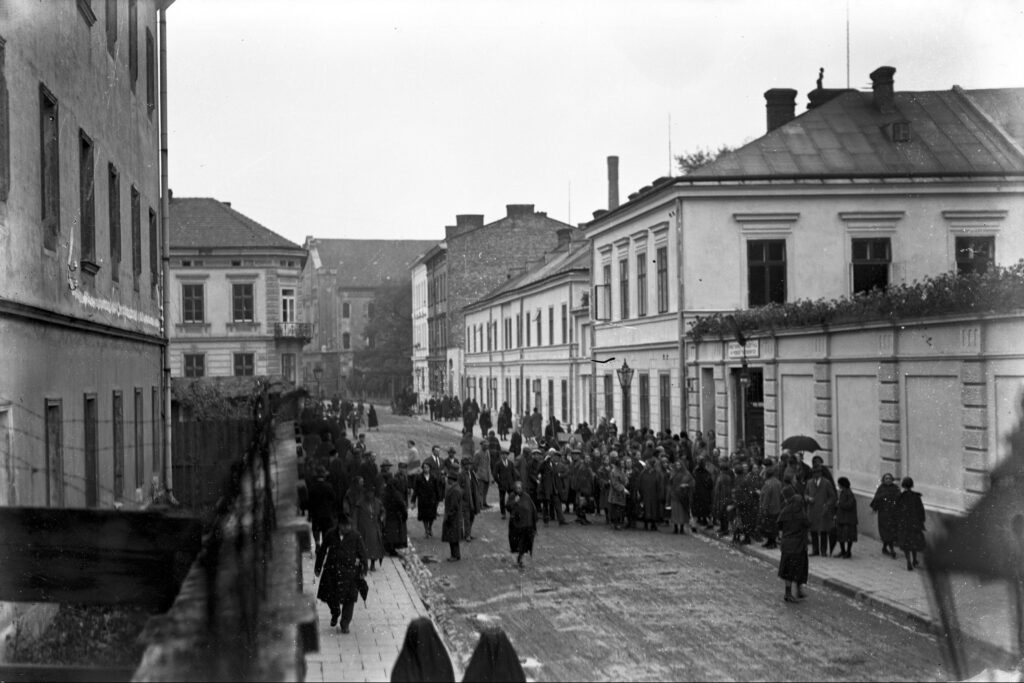
The State Cigar and Tobacco Products Factory in 1926 (photo: National Digital Archive)
It was not until summer 2016, after a period of communist stagnation and years in which the area was passed from hand to hand, that Cracovians were able to rediscover the charms of this district just a few minutes’ walk from the city’s market square. Thanks to the Tytano Foundation, a buzzing space full of craft beer pubs and restaurants and with a unique atmosphere opened its gates.
The idea behind Dolne Młyny – literally “Lower Mills”, named after the street where the main entrance lies – was simple: to restore the post-factory “ghost town” to the local community, who would also find a space where foundations could operate and debates and meetings be held.
For four years, Dolne Młyny became a popular hub of Kraków’s authentic nightlife. In this time, according to the foundation’s calculations, almost 600 cultural and charity events, stand-up comedy evenings and concerts took place, forming what they proudly call an “urban ecosystem of visions”.
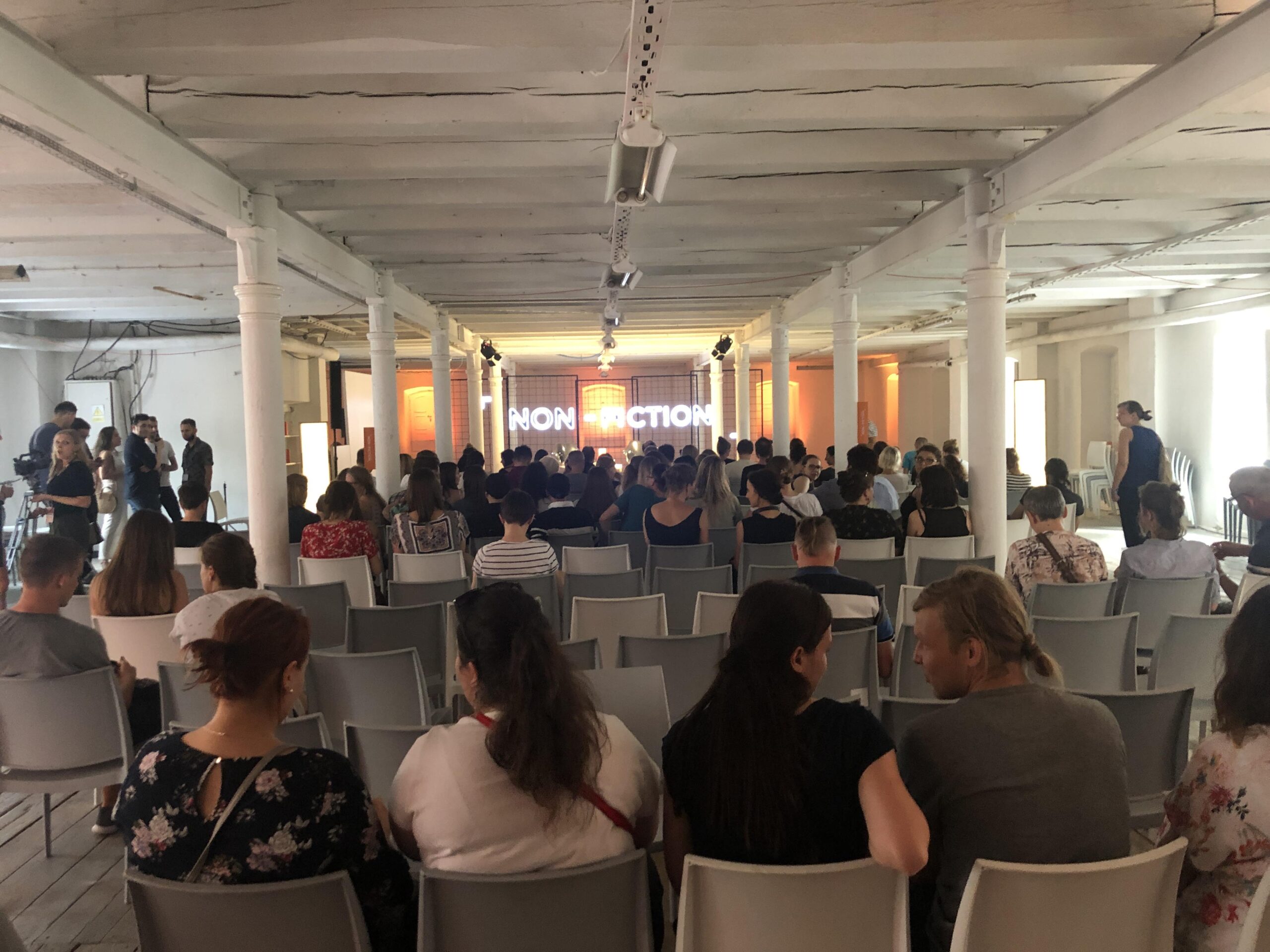
Close to 150 exhibitions of paintings, sculptures and photographs were also held in the post-industrial halls, while festivals including Krakow Photomonth and the International Graphic Triennial Colour in Graphic Art, exhibitions and Fine Arts Academy students’ diploma presentations, journalism workshops and film screenings were all hosted there.
“For such a short period, we achieved a lot,” Anna Zemanek, the foundation’s PR manager, told Notes from Poland. “We have reason to be proud of our work.”
“I think that we are losing a welcoming space for initiatives organised not only by foundations, but by residents too. They were the ones who got involved in many charity and voluntary activities using the Dolne Młyny infrastructure,” Zemanek adds.
“Our work was mainly based on grassroots initiatives; we didn’t have much outside support. I am glad that we managed to do so much in this time and become almost a cult place.”
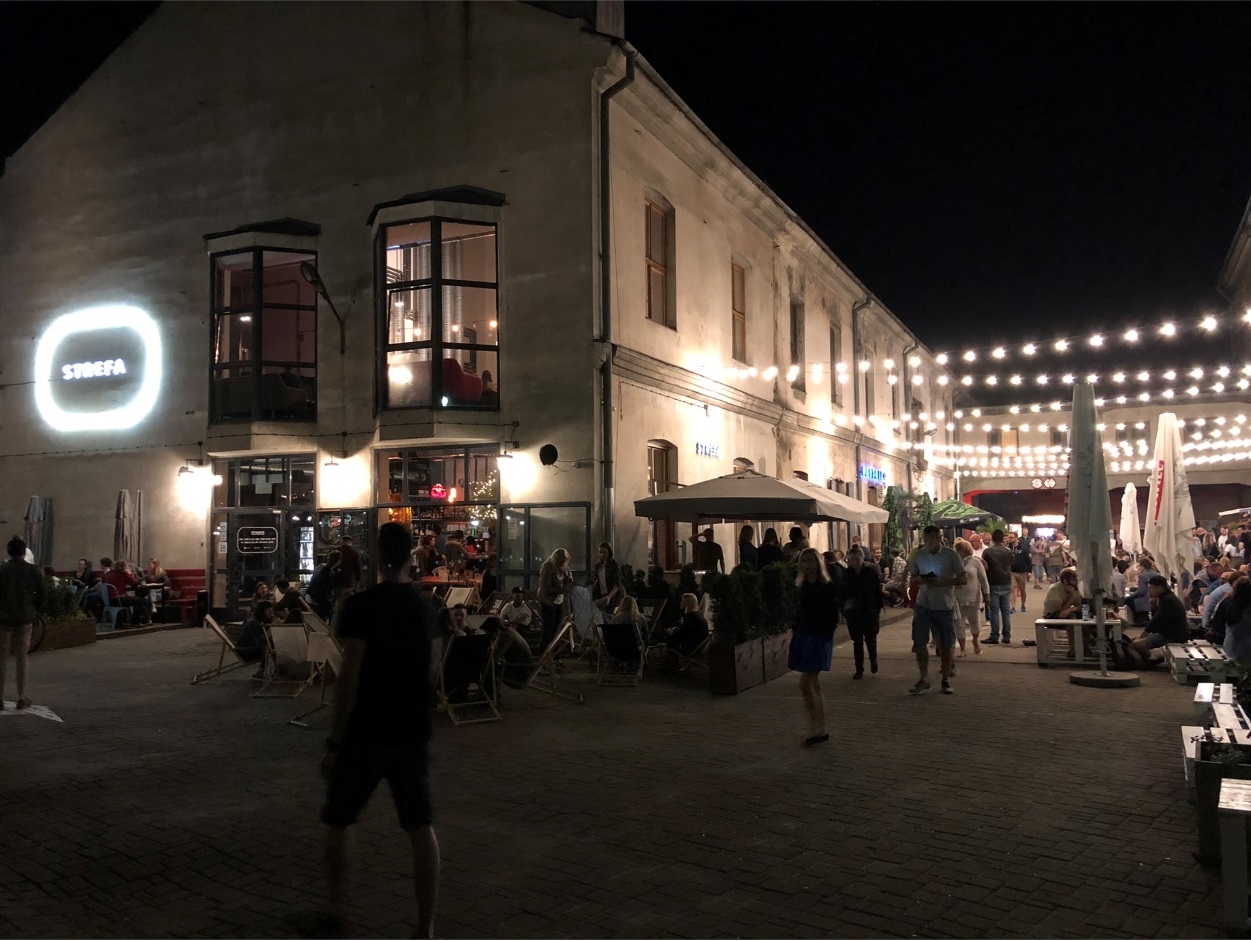
What next?
Of course, like any bustling city centre area that remains lively well into the small hours, Dolne Młyny also had its critics. Nearby residents complained about the noise, the weekly excesses and the mess left in the surrounding streets.
In 2018 environmental problems began to appear too. The Spanish owners of the site, Immobilaria Camins Polska (ICP), presented soil tests they had commissioned which signalled the need for the Tytano Foundation to move out fast. Among other issues, norms for zinc and other heavy metals were exceeded tenfold. This was the beginning of a two-year legal battle that will conclude on 30 September as the area is handed over to the developer.
“According to our agreement, the site will be surrendered in no worse state than when it was taken over by Tytano,” Łukasz Kumecki from the foundation told local newspaper Gazeta Krakowska. “I will not destroy anything, I will dismantle what I can use in new locations on a new project. The tenants will no doubt be doing the same, as they have invested significant money here.”
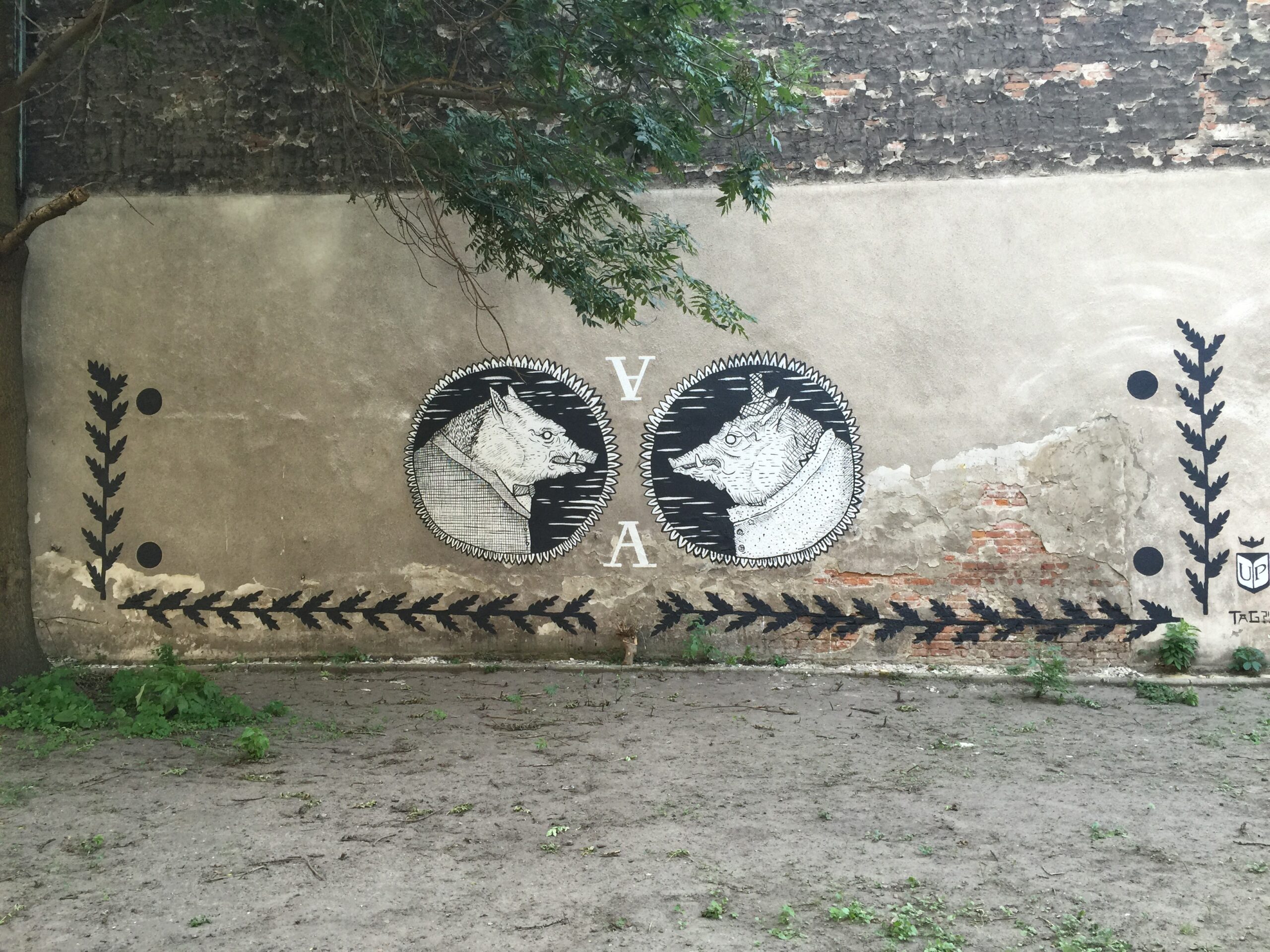
The fate of the complex remains unclear, however. The Spanish owners have changed their mind several times, first saying that the area would mostly be adapted for use as a hotel, then for housing, and lately, for multifunctional purposes.
“Regarding what could be put there, for example there would be a modern functional space, in accordance with the local development plan, our construction permit and the conservator’s specifications,” Aldo Ibañez from ICP told local media.
“We would like tenants for example working with start-ups or involved in cultural activity to be able to find a place there. There would be catering in one of the main places, and in the next part, for instance, service points or areas for accommodation purposes,” Ibañez added.

Some of the exhibitors and restaurants leaving Dolne Młyny are moving to new food halls that hope to fill the market gap. One is Hala Lipowa, also set up in a post-factory building, in the up-and-coming post-industrial Zabłocie district a few kilometres from the centre.
Another is Hala Forum, a space on the ground floor of the imposing former Forum Hotel on the banks of the river that has been adapted to culinary purposes.
But for all their charms, neither of these has the chance to recreate the atmosphere of the small town in a city, closed to traffic, its main street filled with hundreds of deckchairs, and the hubbub of conversation blending with sets from popular DJs.
Hope for the future
According to news from the website lovekrakow.pl, there is a ray of hope for fans of Dolne Młyny. In the Zabłocie district, an 8,000 square metre space has been vacated by two printers that have moved to the outskirts of the city.
“This place isn’t suited to production halls, manoeuvring lorries, palette storage and the noise of printing presses any more,” said Magdalena Leyko-Oleńska the daughter of the company’s owner. “I thought that our site could be adopted by companies working in catering.”
The new space that could replace the gap left by the Tytano Foundation’s venture could be between Romanowicza, Ślusarska and Lipowa streets. According to Leyko-Oleńska, after presentation of preliminary visual designs, she was approached by more than a hundred businesses, who could together create a chillout zone, market, food hall, bakeries and teahouses, as well as a graduation tower and playground.

“I don’t intend to create a party zone and copy similar projects,” Leyko-Oleńska stressed. “There definitely won’t be a club with concerts and that kind of open-air events. This is my expectation, with residents in mind. Perhaps we’ll lose some people who don’t fancy this conception, but I think that many will also appreciate our approach.”
Another possibility suggested by Kraków activists is that what is coming to an end at Dolne Młyny could be reproduced in the Wesoła district on other side of the Old Town, on the previous University Hospital site which has recently come into the possession of the city.
Yet talks are currently at a very general stage. Whatever the future that awaits similar projects, as a city space Dolne Młyny was irreplaceable. Unique in Poland, urban through and through, trendy, and culturally productive.
As for the Tytano Foundation, Zemanek told us that it is in talks regarding future projects. “It turned out that our initiatives and the place were needed by Kraków, and I hope we will be able to meet the expectations invested in us.”
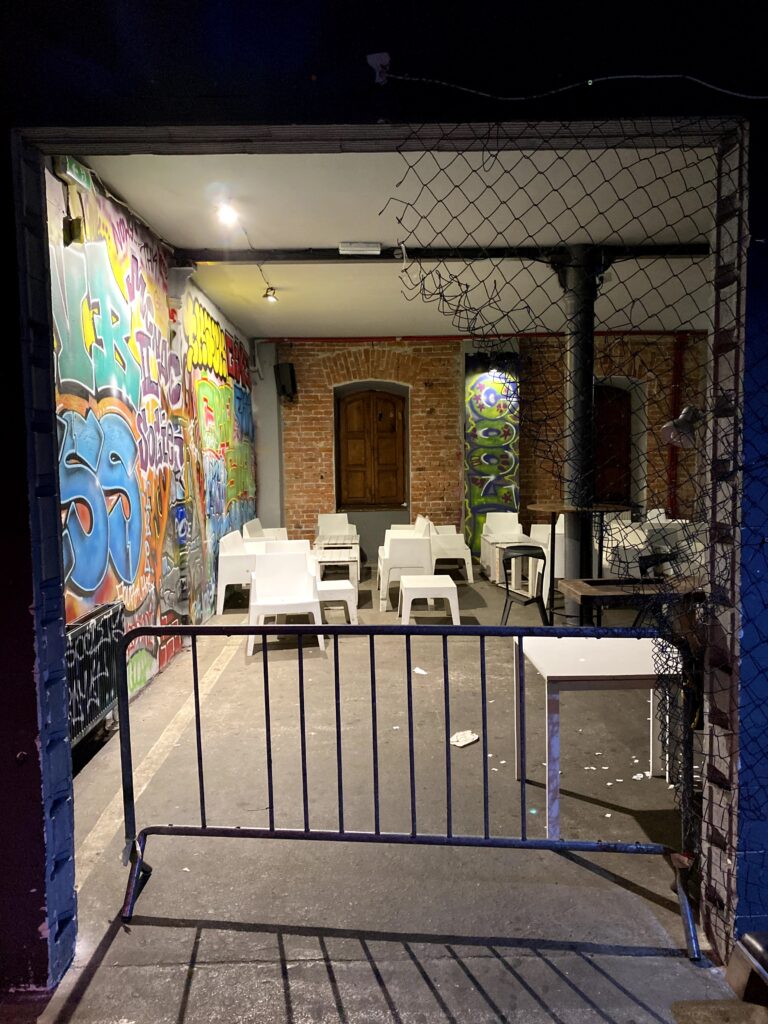
Could this mean a new similar venture to replace Dolne Młyny?
“Perhaps we will soon have something to show off,” Zemanek told us. “The concept implemented at Dolne Młyny will live on.”
The legacy it leaves behind is a major challenge for the city authorities and mayor Jacek Majchrowski. In an ambitious university city of almost a million inhabitants, they must find a space for such enterprises. The Polish capital of culture cannot be a relic.
In this sense, in Kraków, which can sometimes be staid and fusty as it gets caught up in its history, Dolne Młyny was a breath of fresh air. If all the city’s residents get in place of it is empty promises, while the interests of big developers get their way, ultimately everyone will lose out.
Translated by Ben Koschalka
Main image and other photos unless stated otherwise: Marcin Makowski

Marcin Makowski is a Head of News at Interia
